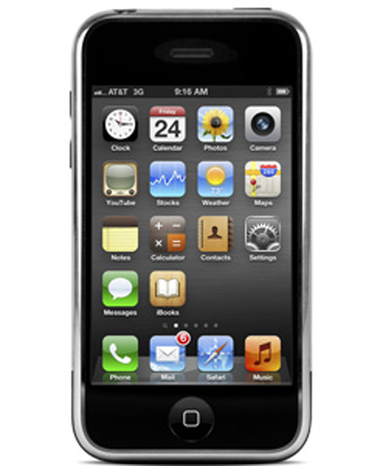Syphilis, HIV and gay dating sites

Health officials across the nation are concerned with increases in the rate of primary and secondary syphilis (P&S syphilis) in recent years. Primary and secondary cases are those when the disease is most infectious.
Health officials in some areas blame the increase on online gay dating apps for mobile devices; examples of those sites with apps include Grindr, BoyAhoy, and GuySpy. The Buffalo News reports, “The number of syphilis cases has tripled in Erie County over the last five years.
“And health officials attribute most of that increase to smartphone applications that make it easier for men to hook up with other men. The county Health Department recorded fewer than 40 diagnosed syphilis cases in 2011. But last year, the number of new cases climbed to 157. And officials expect the growth to continue.”
New York State, with a 2013 rate of 7.5 cases per 100,000, now rates 6th in the nation for P&S syphilis cases among the 50 states.
The increase in P&S Syphilis is a nationwide problem. The Centers for Disease Control (CDC) reported in 2014, “In 2000 and 2001, the national rate of reported primary and secondary (P&S) syphilis cases was 2.1 cases per 100,000 population, the lowest rate since reporting began in 1941.
“However, the P&S syphilis rate has increased almost every year since 2000–2001. In 2014, a total of 19,999 P&S syphilis cases were reported, and the national P&S syphilis rate increased to 6.3 cases per 100,000 population, the highest rate since 1994.
“During 2000–2014, the rise in the P&S syphilis rate was primarily attributable to increased cases among men and, specifically, among gay, bisexual, and other men who have sex with men (collectively referred to as MSM).”
The CDC noted that in 2014, men accounted for 91 percent of all cases of P&S syphilis. “And, of those male cases for whom sex of sex partner was known, 83% were MSM. Reported cases of P&S syphilis continued to be characterized by a high rate of HIV co-infection, particularly among MSM. In 2014, 26 states reported both sex of sex partner and HIV status (HIV-positive or HIV-negative) for at least 70% of P&S syphilis cases. Among P&S syphilis cases with known HIV-status in these states, 51% of cases among MSM were HIV-positive, compared with 11% of cases among MSW, and 6% of cases among women.”
The Buffalo News report tied the increase in syphilis cases to smartphone apps: “Health Department investigators trace the surge in recent years to men who have sex with other men and typically find their partners through their phones. A proliferation of GPS-enabled smartphone apps make it possible for men to find like-minded and available male sex partners almost anywhere.
“The surge in syphilis cases correlates to the rising popularity of smartphone social media apps that enable a lifestyle of instant gratification for users who seek it. While some gay men use these apps to nurture friendships, dates and long-term relationships, others use them as hook-up apps to find sex partners who are nearby, interested and available.
“Phone apps have transformed the way gay men socialize and interact, said Christopher Treacy, a local gay journalist who has written about his love/hate relationship with these apps. While the men he’s encountered through the app he uses tend to be responsible and upfront regarding their health status, he said some of these social media sites present a danger for men who are more compulsive and careless.”
Not everyone agrees with health officials. Towleroad, commenting on the Erie County report, said, “Although gay dating apps are almost certainly a factor, the problem is probably not quite as simple as health officials in Buffalo make it sound. After all, men were having casual sex with other men in parks and bathrooms long before gay dating apps came along. Other likely factors include decreased condom use among gay men, due to the increasingly common practice of serosorting and the advent of PrEP.”
Towleroad quoted an Atlantic article, The Return of Syphilis, to support its assertion.
The Atlantic story said, “Some health officials point to the growing role of technology in people’s sex lives, specifically apps like Tinder and Grindr that facilitate casual sex between partners who don’t know each other’s sexual histories. But there’s no conclusive evidence that these apps have played a role in syphilis outbreaks, especially given that Tinder was released more than a decade after syphilis rates began rising again in 2002.
“Sarah Kidd, an epidemiologist at the CDC, believes dating apps can pose a diagnostic problem, since controlling the spread of syphilis relies on being able to notify an infected person’s sexual partners. ‘We do know that with the rise of so many apps, it’s easier to meet partners and not necessarily have identifying information and not be able to track them down later,’ she says.” …
“Kidd suggests that people might be less careful now that the threat of HIV/AIDS is less immediate than it was in the 1990s, or that partners might use strategies to prevent HIV transmission that aren’t as effective for other STDs. Condoms, for instance, are a good precaution but not a reliable prevention method for syphilis, as the infectious sore might be on an area that remains uncovered.”
The important thing, Towleroad concludes, “Regardless of what all is causing the increase, the solution is clear. Syphilis is easily treatable with penicillin, and a U.S. Preventive Services Task Force recently issued a draft recommendation saying that all adults and teens at increased risk for syphilis should be screened regularly. Those at the highest risk for syphilis are gay and bisexual men, and people with HIV.”
The message is clear – if you are having sex, wear protection in addition to any other prevention methods you practice.
The Gayly – January 6, 2016 @ 3:20 p.m.





